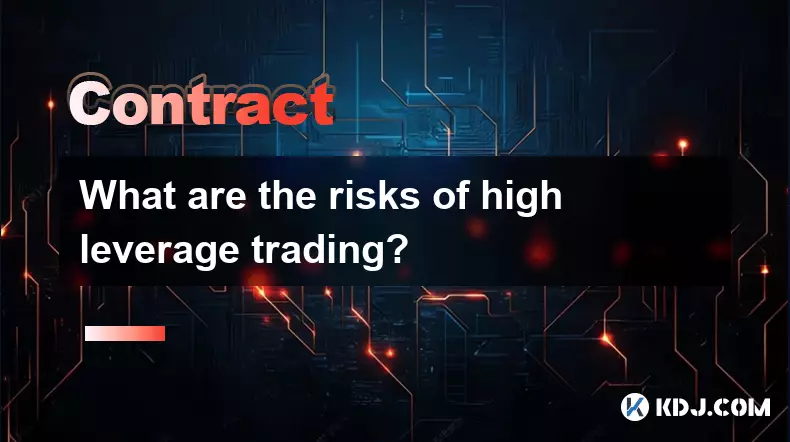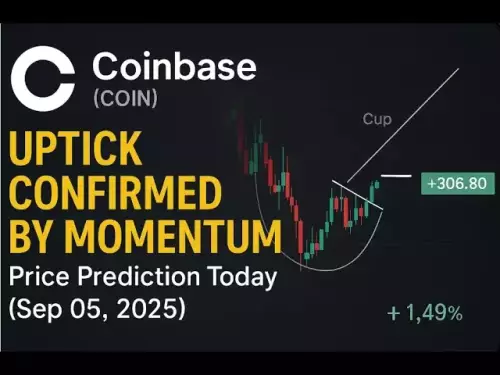-
 Bitcoin
Bitcoin $111400
1.19% -
 Ethereum
Ethereum $4330
1.06% -
 XRP
XRP $2.851
1.74% -
 Tether USDt
Tether USDt $1.000
0.00% -
 BNB
BNB $851.3
0.83% -
 Solana
Solana $205.5
0.99% -
 USDC
USDC $0.0000
0.00% -
 Dogecoin
Dogecoin $0.2167
2.37% -
 TRON
TRON $0.3325
-0.67% -
 Cardano
Cardano $0.8354
3.62% -
 Hyperliquid
Hyperliquid $46.90
5.09% -
 Chainlink
Chainlink $22.43
0.60% -
 Ethena USDe
Ethena USDe $1.001
-0.01% -
 Bitcoin Cash
Bitcoin Cash $613.8
4.60% -
 Sui
Sui $3.400
4.37% -
 Stellar
Stellar $0.3603
2.19% -
 Avalanche
Avalanche $24.45
0.44% -
 Hedera
Hedera $0.2203
3.90% -
 Cronos
Cronos $0.2672
0.45% -
 UNUS SED LEO
UNUS SED LEO $9.533
0.10% -
 Litecoin
Litecoin $113.1
2.80% -
 Toncoin
Toncoin $3.104
0.11% -
 Shiba Inu
Shiba Inu $0.00001246
3.18% -
 Polkadot
Polkadot $3.827
2.06% -
 Uniswap
Uniswap $9.436
2.42% -
 Dai
Dai $0.0000
0.01% -
 Monero
Monero $266.1
-0.66% -
 Ethena
Ethena $0.6788
4.52% -
 Aave
Aave $305.0
-0.98% -
 World Liberty Financial
World Liberty Financial $0.1830
-2.70%
What are the risks of high leverage trading?
High leverage in crypto trading amplifies risks, leading to rapid liquidations, emotional decisions, and potential total loss of margin from small price moves.
Sep 06, 2025 at 01:55 am

Risks Associated with High Leverage in Crypto Trading
1. Leverage amplifies both gains and losses, but in volatile markets like cryptocurrency, the downside risk becomes significantly more dangerous. When traders use high leverage, even small price movements against their position can trigger immediate and severe losses. A 5% move in the wrong direction with 20x leverage results in a complete loss of the initial margin.
2. Liquidation is one of the most common outcomes of high leverage trading. Exchanges automatically close positions when the margin falls below the maintenance threshold. This happens rapidly in fast-moving markets, leaving traders with no opportunity to adjust or recover. Frequent liquidations erode capital over time, especially for inexperienced traders.
3. Market volatility in the crypto space is inherently unpredictable. News events, whale movements, or sudden regulatory announcements can cause sharp price swings. High leverage positions are extremely vulnerable during such events, often resulting in cascading liquidations across the market, further exacerbating price drops.
4. Emotional decision-making increases under high leverage conditions. The pressure of managing a highly leveraged position can lead to panic selling, overtrading, or holding losing positions too long in hopes of a reversal. These behaviors often compound losses and damage long-term trading discipline.
5. Funding fees in perpetual futures contracts can accumulate quickly when holding leveraged positions for extended periods. In trending markets, these fees may seem negligible, but during sideways or choppy price action, they steadily eat into profits or deepen losses, especially with high leverage.
Impact of Margin Calls and Forced Closures
1. When the value of a leveraged position declines, exchanges issue margin calls requiring additional funds to maintain the position. Many traders fail to meet these requirements on time, leading to partial or full liquidation. This process occurs without manual intervention, removing control from the trader.
2. Forced closures often happen at the worst possible moment—during extreme volatility or market bottoms. Traders are exited at unfavorable prices, locking in losses. This mechanical aspect of leveraged trading removes the possibility of strategic exits based on analysis.
3. Some platforms use auction mechanisms or insurance funds during mass liquidations, which can distort pricing. In extreme cases, traders may be liquidated at prices far from the index, leading to disputes and financial harm.
4. High leverage increases dependency on platform stability. Network delays, API outages, or exchange downtime during critical moments can prevent traders from adjusting positions or adding margin, resulting in unintended liquidations.
5. The risk of cascading liquidations grows when many traders use similar leverage levels and positions. A sharp move can trigger a wave of forced selling, accelerating price declines and creating a feedback loop that impacts the broader market.
Psychological and Strategic Pitfalls
1. High leverage fosters a gambling mentality rather than disciplined trading. The allure of multiplying returns with minimal capital can overshadow risk management, leading traders to ignore stop-losses and position sizing principles.
2. Overconfidence often follows initial success with leveraged trades. Traders may attribute profits to skill rather than market conditions, encouraging larger and riskier bets in subsequent trades, increasing the likelihood of catastrophic loss.
3. The focus shifts from market analysis to short-term price movements when leverage is high. Traders become reactive, constantly monitoring tick-by-tick changes instead of evaluating broader trends or fundamentals, impairing long-term decision-making.
4. Recovery from a major loss due to leverage is extremely difficult. A 50% loss requires a 100% gain just to break even. After a liquidation event, traders may feel pressured to 'chase' losses with equally risky trades, deepening the cycle of loss.
5. Risk-reward ratios become distorted. A trade with 10x leverage might promise a 100% return on margin, but the probability of losing the entire stake is significantly higher. Many traders fail to calculate expected value accurately, overestimating the profitability of high-leverage strategies.
Common Misconceptions About Leverage
1. Many believe leverage is a tool for experienced traders only, but even seasoned professionals suffer losses due to unforeseen volatility. Experience does not eliminate the structural risks inherent in amplified exposure.
2. There is a false assumption that stop-loss orders fully protect leveraged positions. In reality, slippage during high volatility can cause execution at much worse prices than anticipated, sometimes resulting in losses beyond the initial margin.
3. Some traders think they can outsmart liquidation mechanisms by using tighter leverage or complex hedging. However, during flash crashes or rapid market shifts, these strategies often fail due to liquidity gaps and exchange protocols.
4. Leverage is often seen as a way to access larger positions with less capital, but this ignores the cost of funding, the increased probability of liquidation, and the psychological burden of managing amplified risk.
5. The belief that 'I’ll just close the position before it gets liquidated' underestimates how fast markets move. In crypto, price gaps are common, and positions can be liquidated in seconds without warning, leaving no time for manual intervention.
Frequently Asked Questions
What happens when a leveraged position gets liquidated?The exchange automatically closes the position when the margin balance falls below the required threshold. The trader loses the collateral deposited, and the position is terminated at the current market price, which may be unfavorable due to slippage.
Can I lose more than my initial deposit in leveraged trading?On most reputable crypto exchanges, losses are limited to the initial margin due to automatic liquidation and insurance funds. However, in rare cases of extreme market gaps or platform failures, some traders have faced negative balances, though platforms typically cover this to maintain trust.
How does leverage affect trading fees?Leverage itself does not change trading fees, but higher position sizes result in larger fee amounts based on notional value. Additionally, funding fees in perpetual contracts scale with position size, making them more costly under high leverage.
Is high leverage ever justified in crypto trading?In specific scenarios—such as short-term scalping with strict risk controls or experienced traders using hedging strategies—high leverage might be employed. However, the risk-to-reward profile remains unfavorable for the majority, and consistent profitability is rare.
Disclaimer:info@kdj.com
The information provided is not trading advice. kdj.com does not assume any responsibility for any investments made based on the information provided in this article. Cryptocurrencies are highly volatile and it is highly recommended that you invest with caution after thorough research!
If you believe that the content used on this website infringes your copyright, please contact us immediately (info@kdj.com) and we will delete it promptly.
- Hyperliquid, USDH Stablecoin, and DeFi Growth: A New Era?
- 2025-09-06 03:50:12
- Solana's Tug-of-War: Bulls vs. Sellers – Who's Winning?
- 2025-09-06 02:45:16
- Crypto Tokens, SEC Regulation, and Market Explosion: Navigating the Web3 Revolution
- 2025-09-06 02:45:16
- Crypto Coins in 2025: Spotting the Next Big Investment
- 2025-09-06 03:05:15
- Altcoins: Profit Potential or High-Risk Gamble?
- 2025-09-06 03:05:15
- Ethereum Price, PEPE Coin, and Layer 2s: What's the Hype?
- 2025-09-06 03:16:35
Related knowledge

What to do if you are about to be liquidated?
Sep 06,2025 at 01:00am
Understanding Liquidation in the Crypto Market1. Liquidation occurs when a trader’s margin balance falls below the required maintenance margin, forcin...

How to trade Ethereum futures?
Sep 05,2025 at 03:54pm
Understanding Ethereum Futures Basics1. Ethereum futures are financial derivatives that allow traders to speculate on the future price of ETH without ...

What is the best leverage for beginners?
Sep 06,2025 at 02:37am
Understanding Leverage in Cryptocurrency Trading1. Leverage allows traders to borrow funds to increase their position size beyond their available capi...

Why was my futures position liquidated?
Sep 06,2025 at 12:18am
Decentralized Exchanges and Their Impact on Crypto Trading1. Decentralized exchanges (DEXs) have reshaped the way users interact with digital assets b...

What are the risks of high leverage trading?
Sep 06,2025 at 01:55am
Risks Associated with High Leverage in Crypto Trading1. Leverage amplifies both gains and losses, but in volatile markets like cryptocurrency, the dow...

What does it mean to be long or short?
Sep 05,2025 at 02:54pm
Understanding Long Positions in the Crypto Market1. Taking a long position means an investor expects the price of a cryptocurrency to rise over time. ...

What to do if you are about to be liquidated?
Sep 06,2025 at 01:00am
Understanding Liquidation in the Crypto Market1. Liquidation occurs when a trader’s margin balance falls below the required maintenance margin, forcin...

How to trade Ethereum futures?
Sep 05,2025 at 03:54pm
Understanding Ethereum Futures Basics1. Ethereum futures are financial derivatives that allow traders to speculate on the future price of ETH without ...

What is the best leverage for beginners?
Sep 06,2025 at 02:37am
Understanding Leverage in Cryptocurrency Trading1. Leverage allows traders to borrow funds to increase their position size beyond their available capi...

Why was my futures position liquidated?
Sep 06,2025 at 12:18am
Decentralized Exchanges and Their Impact on Crypto Trading1. Decentralized exchanges (DEXs) have reshaped the way users interact with digital assets b...

What are the risks of high leverage trading?
Sep 06,2025 at 01:55am
Risks Associated with High Leverage in Crypto Trading1. Leverage amplifies both gains and losses, but in volatile markets like cryptocurrency, the dow...

What does it mean to be long or short?
Sep 05,2025 at 02:54pm
Understanding Long Positions in the Crypto Market1. Taking a long position means an investor expects the price of a cryptocurrency to rise over time. ...
See all articles

























































































